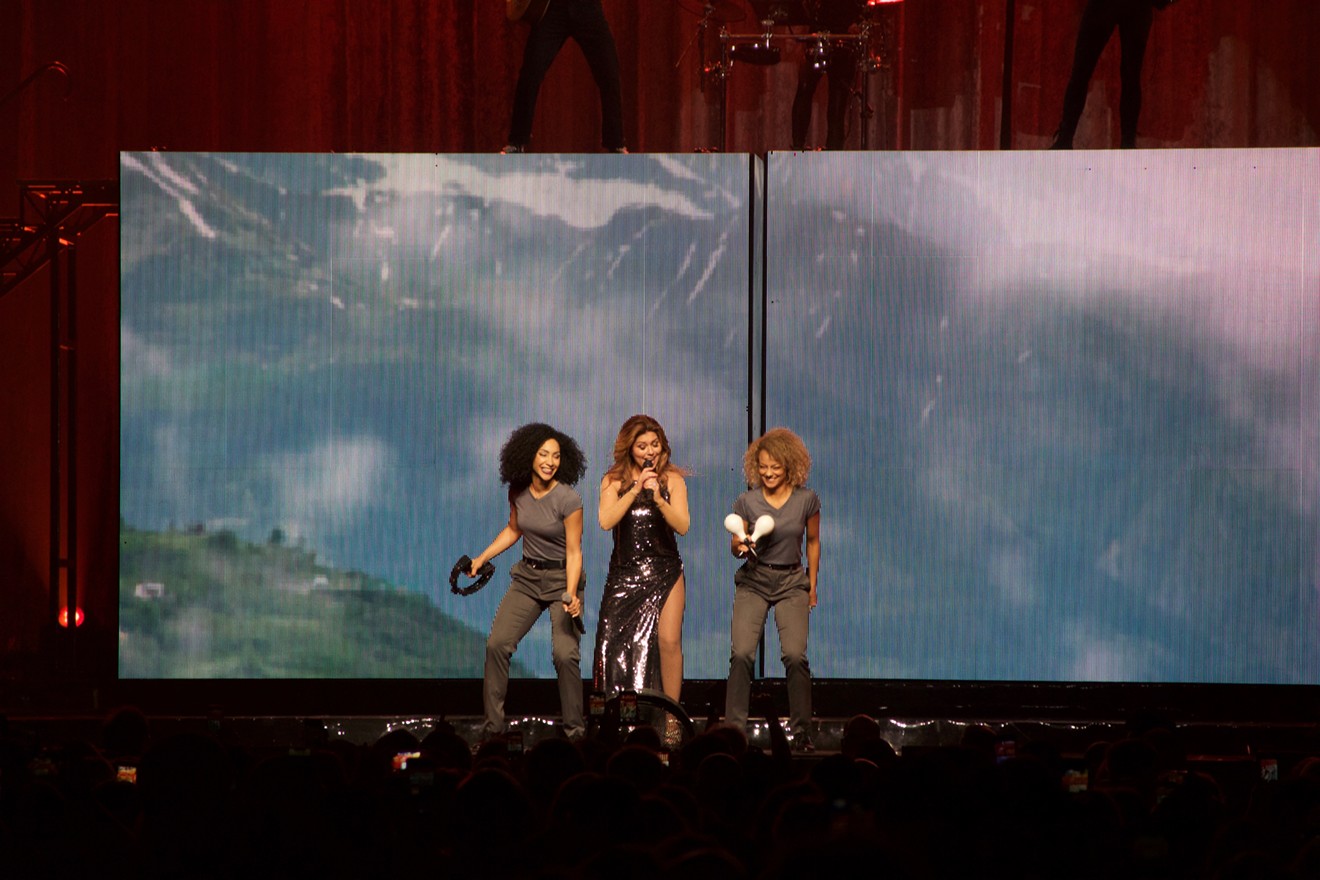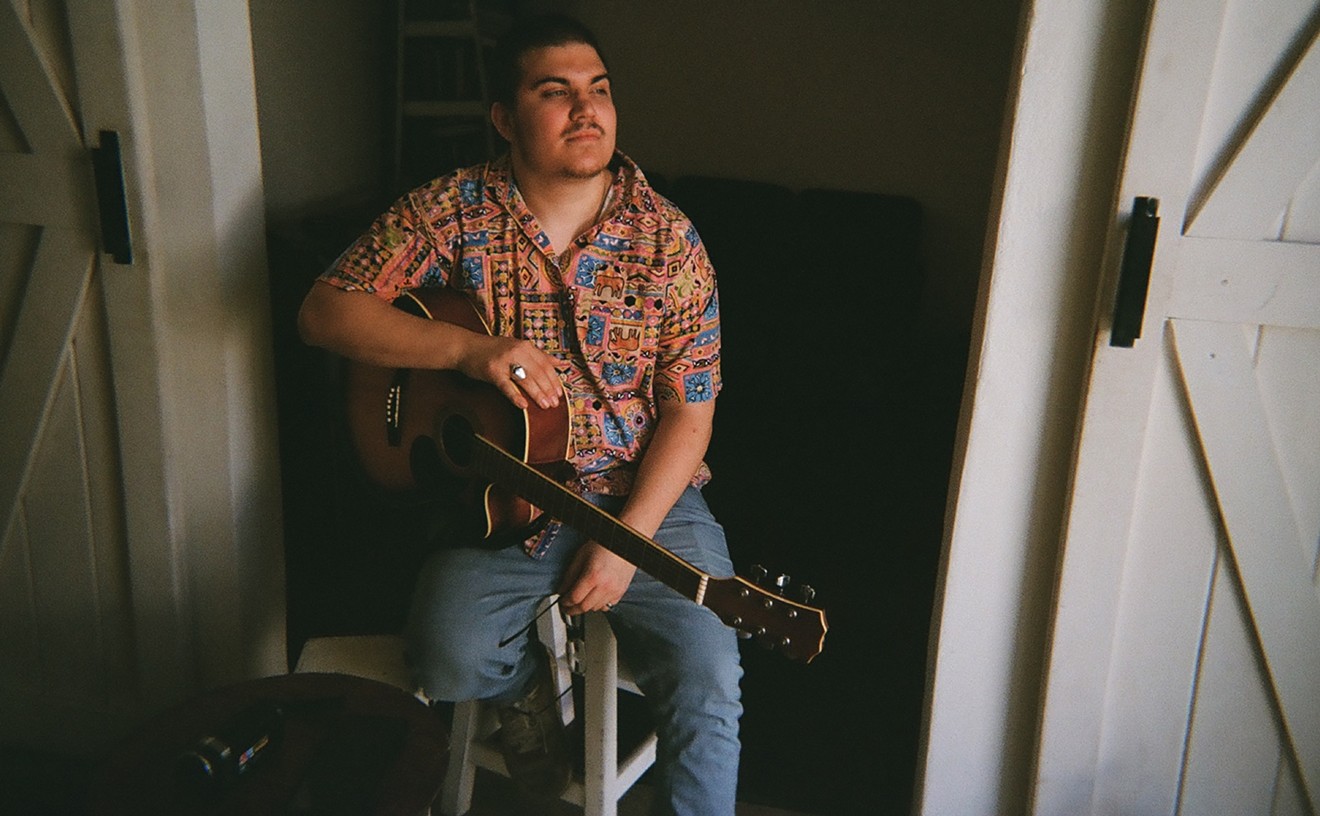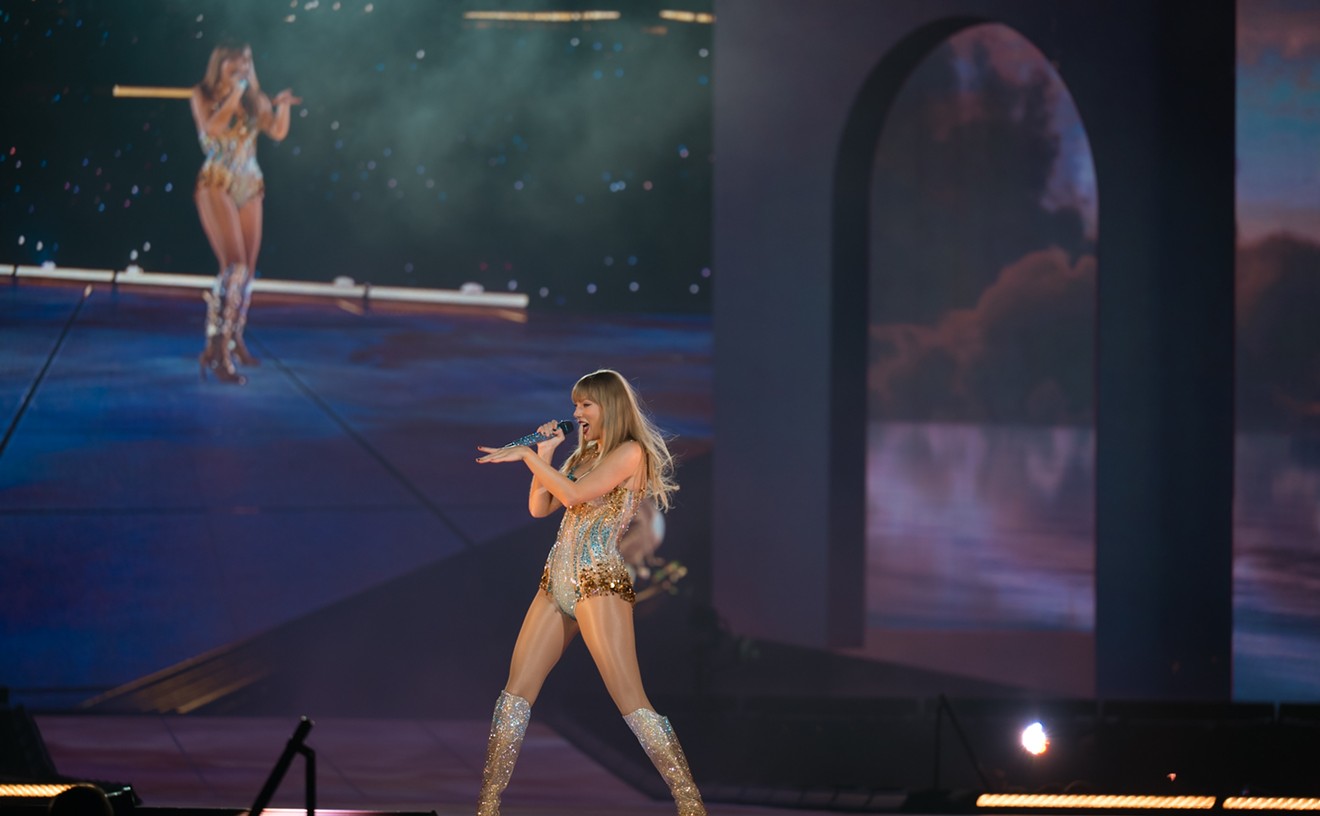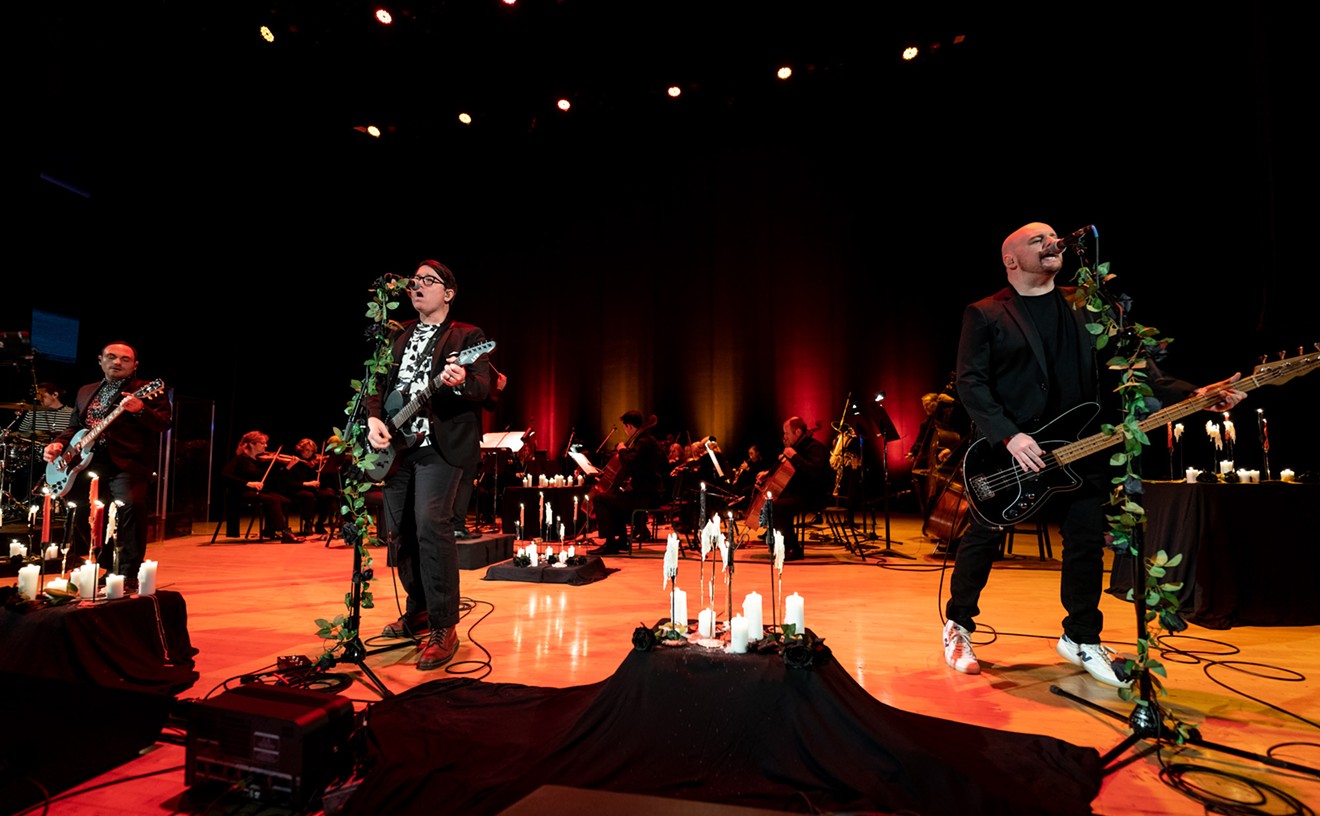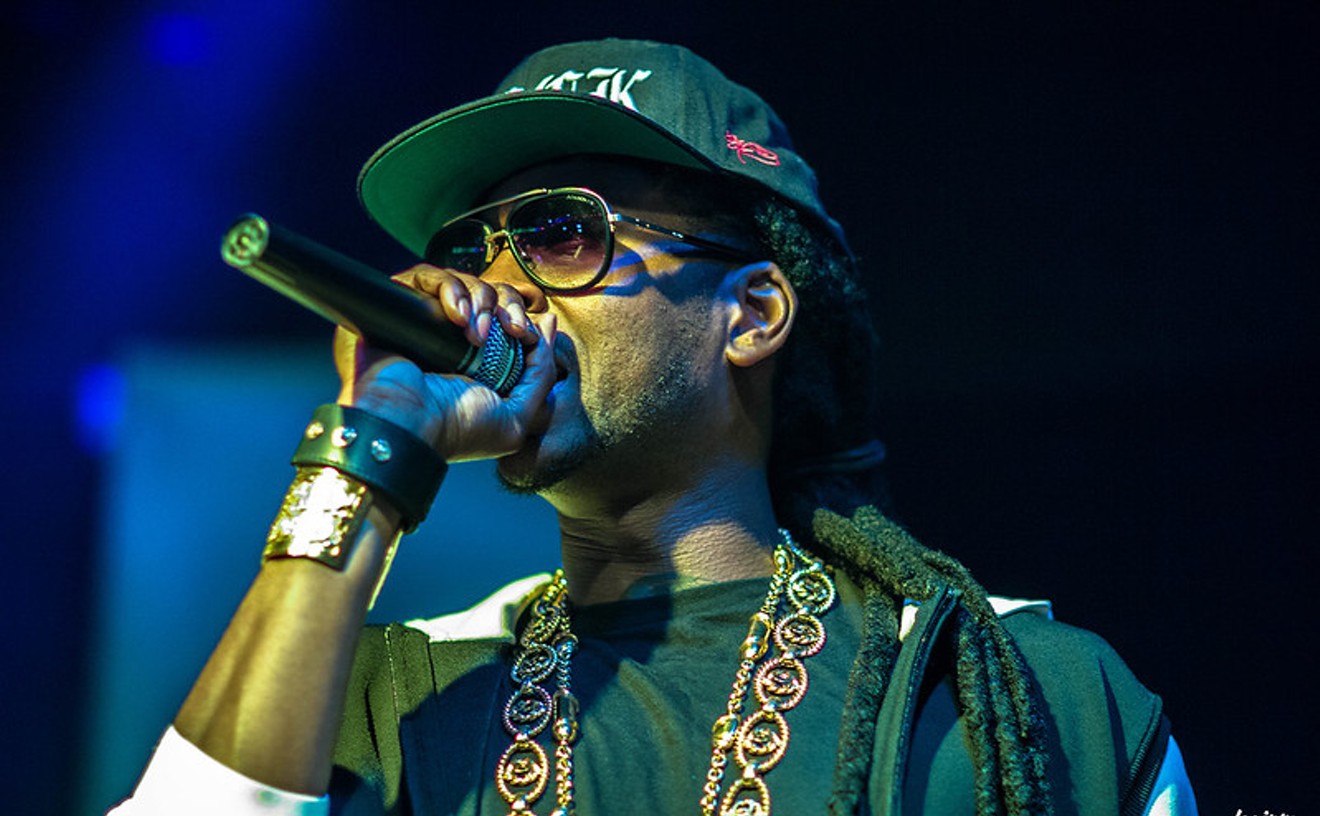The house lights faded as the stadium thump of Queen’s “We Will Rock You” thundered to life. Perhaps you’ve heard “We Will Rock You” at the American Airlines Center before — during a Mavericks or Stars game — but you’ve never heard it like that, not with the fog, at that volume, with the lights off, with an arena full of people who did not expect to hear it, smiling as it blasted.
“Buddy you're a boy make a big noise ...”
The Brian May guitar screech hit like a bolt of lightning that explains the thunder. That is how you start a concert. That is how you jolt a crowd into beautiful mayhem.
When the Queen song ended, a solitary figure emerged at the back of the floor seating, on a riser barely taller than the soundboard — about where the Mavericks take free throws on game days. Head down, covered by a shock of long silver hair, the figure stared down at two massive drums. She was frozen like a statue, like a plaster-cast of a healthy Kurt Cobain. Then, in an impetuous burst, she slammed the beat of “We Will Rock You.”
A lizard-like synth melody spread over the drumbeat, and the crowd’s mood shifted, distracted by an outbreak of localized cheering. Most of the audience began a frantic search for the source of the commotion. Eventually, people found it, the house-left section 107. The whole arena started cheering.
Shania Twain descended from a balcony, all romped up in elegant heels and a mirror-sequined dress with a wide slit up to her waist, an outfit that was both elegant and scandalous — part chandelier, part disco ball.
In the fog and the stiletto gleam, Twain was cool and hypnotic, a flesh-and-blood portrayal of “Return of the Mack.” She wove through the crowd, adorned by a triangulation of spotlights, surrounded by fans who cheered with a mixture of disbelief, elation and frazzled confusion — that starstruck blank face people get when they meet a celebrity. Twain ascended to the stage as “Life’s About to Get Good” leaped into action.
The show was the 13th stop on Twain’s Now Tour, with 42 dates in U.S. and Canada. Then she's off to Brazil and Europe, wrapping up in Australia and New Zealand.While Twain is unquestionably the life of the tour, its heartbeat is 22-year-old drummer Elijah Wood.
tweet this
There are myriad reasons the Now Tour is monumental — and not just for Twain fans. Thematically, cinematically and musically, it achieves that superlative hugeness only possible from a musician of her status and caliber; the cost alone exceeds some countries' GDPs. And while Twain is unquestionably the life of the tour, its heartbeat is 22-year-old drummer Elijah Wood, the shadowy figure who started the show with a drumbeat.
She landed the Twain gig when she was 19, for the Rock This Country tour, backing one of the best-selling music artists of all time. So Wood undoubtedly is a talented drummer. Her style is a meld of her heroes: Taylor Hawkins, Steve Gadd, Cindy Blackman, Steve Ferrone. When she unleashes herself onto the drums, she does it with a brutality much like Dave Grohl circa In Utero. Her style has a breathable flow to it, without collapsing into the loose, octopus-like flail of Ginger Baker or the stumpy lag of Ringo Starr.
Wood grew up in a musical household, heir to a musical lineage — her father was a founding member of Trans-Siberian Orchestra. She’s played onstage since she was 14, when she began touring with her parents’ music education program, Electrify Your Strings. Its mission, according to the website, is “to empower traditional orchestras, bands, and choirs with 21st century skills, and provide the means for young people to think and act creatively through music making and music sharing.”
Onstage, Wood actualizes every part of that mission statement. Moreover, her involvement with a forward-looking orchestra makes sense. Sure, she can beat the living shit out of the drums, but she also knows how to pull back, how to enhance the show with a reliable thump that people may not even notice.
Throughout the first half of the show, Wood shone, but always in the background, in that fundamental way. Then it happened. The drum solo.
Drum kit mastery, above jackhammer quickness, involves a simplicity that can erupt into chaos at any moment, always back and forth. Plenty of drummers can parade around a drum kit — often at an impressive clip — but few have mastered its secret monasticism.
At Wednesday night’s show, Elijah Wood proved herself one of the enlightened drummers. Jammed into an embankment of drums — big drums, a Gretsch kit, candy-apple red, with a tight snare and four tom-toms, loud, massive. If you saw it with the music muted, you’d swear Wood — with the long silver hair and a coal-black outfit — was a heavy-metal drummer. Her solo had the wild sharpness of John Bonham, a longtime hero of hers. Like Bonham, she’s a head-down drummer, seeming so enraptured by the beat that she involuntarily faced the floor as she thrashed at the drums, the drumsticks and the clear drumheads colliding with a dangerous intensity that shook the entire stadium.
The drums were just part of what made the show a festival. After all, when you shell out the triple-paycheck money for an A-list musician like Shania Twain or Justin Timberlake or Beyoncé, you expect some Houdini-level theatrics: musicians vanishing into trapdoors, fireworks that spell things, Jumbotrons bigger than houses, or, if it's Kanye West, stage levitating above the audience.
Twain has not been outdone by Kanye. Throughout the night, platforms levitated. One of Twain’s tricks was so bizarrely good that it sounds like an Ambien dream. She floated over the audience on a guitar case, singing a patriotic song with hints of T-Pain-style autotune.
To be clear: Shania Twain Peter Panned over the audience on an acoustic guitar case. For about seven minutes. It doesn’t matter what musical genres you like or dislike. If you’re at a show and the artist levitates on instrument storage containers, you can call it a damn good experience.
Also unexpected was the Molly-friendly laser show, shades of Pink Floyd. Overall, the graphics might have benefited from a more MDMA-influenced weirdness, but that’s not something most people want from a Twain performance.
More important, the musicians and the dancers were flawless, gifted. Twain selected the finest artists she could find. At first glance, there seemed to be a disparity between the number of musicians onstage and the amount of sound and the number of instruments that Twain’s music incorporated. In reality, each musician was a multi-instrumentalist — moving from piano to fiddle, guitar to mandolin, bongo to bass. All of them are young, so we’ll likely be hearing more about them as they move forward in their careers.
The show had a staunchly Vegas feel to it — explosive in its pageantry and flash, entertaining to the hilt, but stylistically Broadway-esque at times. Best of all, people enjoyed themselves, and isn’t that what matters?
Every stop along the Now Tour is regimented: the same set list, same dance routines, same graphics. Of course, logistically, that's the only option. Based on the amount of gymnastic choreography, a unique, crafted show would be outlandish and possibly tragic. The sameness reveals a lot about Twain, that she cleverly personalizes the show every chance she can. After the levitation Wednesday night, she took selfies with three shell-shocked fans, one of whom beamed as she told Twain, “We’re going to hang this picture over the fireplace in a frame.”
Twain is a natural entertainer, able to walk into an arena with 20,000 people and bring, somehow, each person into the moment, beside her. She’s a pro, no doubt. And she captivates an audience with her genuine congeniality. She is Mary Poppins on a guitar case.Twain is a natural entertainer, able to walk into an arena with 20,000 people and connect with each person on the individual level, to bring, somehow, each person into the moment, beside her.
tweet this
She’s music royalty for a reason, and without a doubt, she has earned it. Say the phrase, “Man, I feel like a woman,” and the melody instantly goes bobbing around your head. Everybody knows the song. Everybody knows Shania Twain. She ranks among the best-selling music artists of all time, with 188 awards of various origins, including five Grammys, eight Billboard Music awards and 27 BMI Songwriter awards.
She has concrete stars on both the Hollywood Walk of Fame and the Canadian Walk of Fame. Five studio albums, two live albums. She has collected so many platinum, silver, and gold records and singles that if money ever got tight, she could melt all that metal into a small fortune. Come On Over, her third album, ranks as the sixth-highest-selling album in music history, the highest-selling album of all time by a female artist.
Musically, the Now Tour, like Now as an album, symbolizes a kind of rebirth for Twain. She retired in 2004 after a serious bout of Lyme disease that led to dysphonia, leaving her vocal cords shredded — all of which was depicted in a miniseries on the Oprah Winfrey Network. For more than a decade, she was married to the notorious producer Robert “Mutt” Lange, who sculpted some of the greatest rock albums of all time; who was also known as “One More Time” Lange because he demanded take after take until artists had recorded perfection; and who is, by most accounts, a complete asshole.
Lange often watched Twain’s shows from the side of the stage, counting her mistakes then berating her for each of them after the show. Their divorce and her subsequent marriage to the ex-husband of the woman Twain's ex-husband married, were well documented by the tabloids.
Now, her first album in 15 years, includes performances from more than three dozen musicians, legends and young blood alike. More important, it’s the first album since her debut not to feature “One More Time” Lange as a producer since her 1993 debut. It was her first time with full control of the wheel.
“I told anyone getting involved musically to forget about my other records,” she said in a recent interview. “I didn’t want it to be related to Mutt’s productions at all. I wanted a more organic approach. … I'm a different singer now. There was a lot of coming to terms with that. It's been one of the obstacles in my life I've just had to learn to live with."More important, it’s the first album since her debut not to feature “One More Time” Lange as a producer since her 1993 debut. It was her first time with full control of the wheel.
tweet this
Like the album and the tour, the takeaway of the Dallas show is refreshing, and it can be summarized by the lyrics of the song she started with: “Life’s about joy, life's about pain. It's all about forgiving and the will to walk away. I'm ready to be loved, and love the way I should. Life's about to get good.”
Whether you like Twain’s music or not, it accomplishes a rare task worth appreciating: It brings love and optimism into the world on a massive scale. We humans tend to bicker. We have a tendency to fight, to degrade, to destroy, and the world can be a sad, broken place. Thankfully, even the merest spark of hope or kindness can lead us to a cure, no matter how sad or broken the world gets.
Music is one of the greatest remedies we’ve been given. And Shania Twain is among a select group of musical figures whose words and melodies have woven into every aspect of life. So next time you’re at a wedding or a restaurant or a store and you hear “You’re Still the One,” whether you like the song or not, stop for a moment, listen, and remember that life would be lonelier and darker without it.

